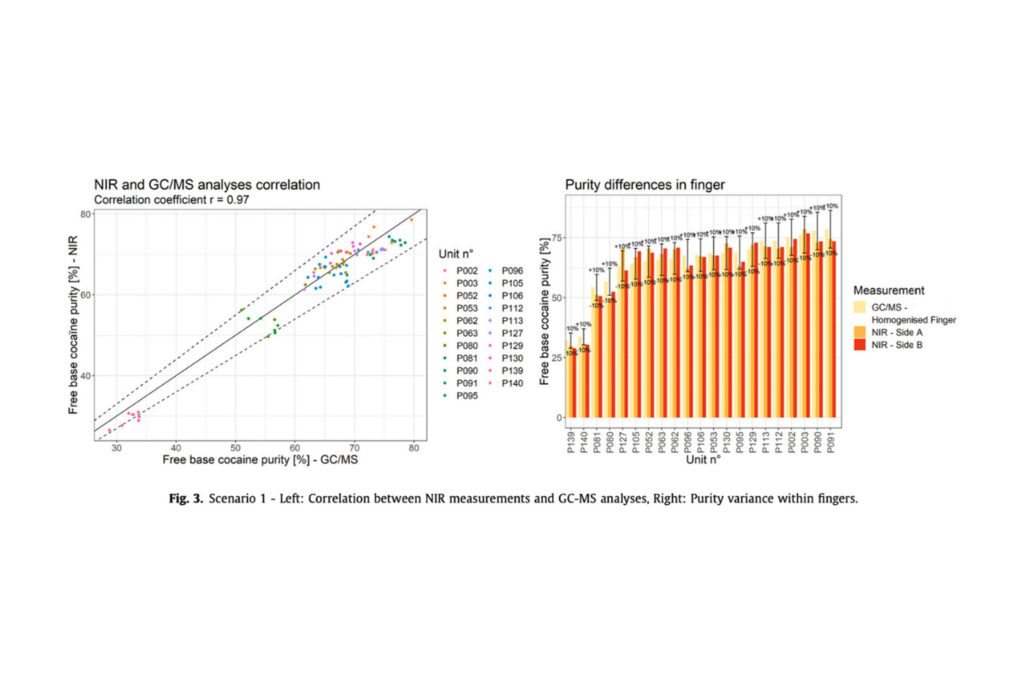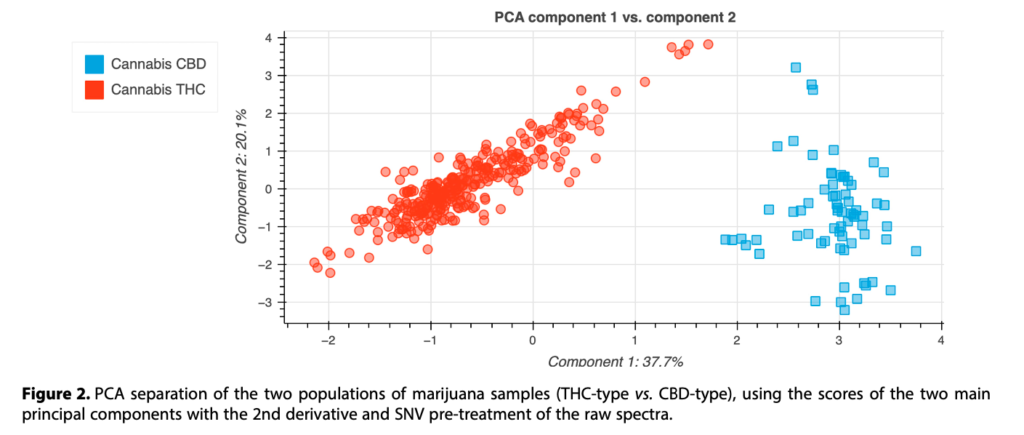
Asbestos is a term that often invokes caution. It is a natural mineral once celebrated for its versatility in construction and manufacturing due to its durability and resistance to heat and chemicals. However, its microscopic, nearly indestructible fibers, invisible to the naked eye, silently pose severe health risks when inhaled. These health risks, are profound and have led to asbestos being one of the most well-documented occupational hazards in history. These include asbestosis, lung cancer, and mesothelioma (a cancer of the lung and abdominal linings),
Despite its well-known dangers, asbestos continues to be prevalent in older buildings, homes, and products. This makes its detection not just prudent but imperative for human health and safety. Traditional detection methods may be considered as effective. However, it come with a host of limitations and challenges. This has led to the pursuit of more advanced, accurate, and safe detection methods.
Enter Near-Infrared (NIR) Spectroscopy: a cutting-edge technique that stands to revolutionize how we detect and manage asbestos risks. It offers a non-destructive, rapid, and precise detection method. It serves as a beacon of hope for industries grappling with the legacy of asbestos use. This blog post explores the hidden dangers of asbestos, the shortcomings of traditional detection methods, and the promising solutions NIR Spectroscopy presents.
Understanding Asbestos
Asbestos refers to a group of six naturally occurring silicate minerals, which, due to their fibrous nature, were once widely used in a myriad of applications. This goes from building materials like roofing and flooring to automotive parts and even protective gear. It’s found in many environments, both naturally and within manufactured products.
However, asbestos’ dark side lies in its microscopic fibers, which, if disturbed and airborne, can be inhaled or ingested. Once inside the body, these fibers can cause significant health issues, which may take years or even decades to manifest. The health risks are not immediate, but prolonged exposure is notoriously linked to chronic respiratory diseases and can dramatically increase the risk of lung-related cancers.
The Limitations of Traditional Asbestos Detection Methods
Traditionally, asbestos detection has relied on methods such as polarized light microscopy (PLM) and phase contrast microscopy (PCM). These methods require direct sampling and visual analysis by trained experts. Chemical analysis techniques, including X-ray diffraction (XRD) and transmission electron microscopy (TEM), are also employed to identify the presence of asbestos with higher accuracy. However, these methods can be invasive, time-consuming, and often require the sample to be transported to a specialized laboratory for evaluation. This not only increases the turnaround time for results but also poses a risk of exposure during sample collection.
Moreover, the need for expert handling and interpretation of results adds a layer of complexity and potential for human error. There is also a significant challenge in quantifying asbestos accurately due to its fibrous nature, which often requires subjective judgment during analysis.
NIR Spectroscopy as a Solution
Near-Infrared (NIR) Spectroscopy is an advanced analytical technique that offers a non-invasive approach to detecting asbestos. It operates on the principle that every chemical compound absorbs light differently across the near-infrared spectrum. When NIR light is shone upon a material, it interacts with the chemical bonds within the substances, producing a unique spectral fingerprint.
This spectral data, when analyzed against known references, can be used to detect and quantify the presence of asbestos with high precision. Near-Infrared (NIR) Spectroscopy stands out for its speed, allowing for in-situ analysis that takes mere seconds. This rapid process, coupled with the method’s non-destructive nature, makes NIR Spectroscopy an attractive option. Especially for regular monitoring and risk assessment of asbestos in various environments.
By enabling immediate and accurate detection, NIR Spectroscopy will serve as a critical tool in the ongoing effort to mitigate asbestos-related health risks. This as it provides a swift response in environments where the legacy of asbestos use still lingers.

Advancements in NIR Spectroscopy for Asbestos Detection
Recent advancements in NIR spectroscopy technologies have significantly bolstered its application in the detection of asbestos, transforming it into a frontline tool for safety and compliance. The evolution of NIR spectroscopy can be attributed to several key developments.
Firstly, the enhancement of portable Near-Infrared (NIR) spectrometers has been a game-changer. These devices now come with improved spectral resolution and advanced optical components that allow for the discrimination of subtle differences between asbestos and non-asbestos materials. The miniaturization of these spectrometers has led to the development of handheld devices that can be easily used in the field. This, by providing immediate results and drastically reducing the time between sampling and analysis.
Secondly, the integration of machine learning algorithms has elevated the analytical capabilities of Near-Infrared spectroscopy. By training these systems with extensive datasets of known asbestos samples, the technology can more accurately identify asbestos even in complex mixtures. Moreover, it can also be detected when present in low concentrations. This has also improved the ability to differentiate between different types of asbestos, which is crucial for risk assessment and remediation efforts.
Lastly, advancements in cloud computing and data sharing have enabled the real-time updating of spectral libraries. This also gives the possibility of sharing of analytical results across platforms. Hence, it ensures that users have access to the latest information and can make informed decisions quickly.
Integrating NIR Spectroscopy into Safety Protocols
Businesses, particularly those in industries with a high risk of asbestos exposure, can greatly benefit from integrating NIR spectroscopy into their safety protocols. By establishing routine inspections using Near-Infrared devices, potential asbestos-containing materials could be identified and managed before any health hazard develops.
The advantages of early and accurate detection of asbestos are manifold. It ensures regulatory compliance, reduces the risk of costly litigation, and most importantly, safeguards employee health. Additionally, it minimizes the need for large-scale evacuations or shutdowns that might occur if asbestos is detected late during operations.
By adopting Near-Infrared spectroscopy, businesses demonstrate a commitment to the highest safety standards. This not only enhances their reputation as responsible entities but also instills trust in employees and clients who are assured of their commitment to a hazard-free environment.
Conclusion: Embracing NIR Spectroscopy for a Safer Future
Asbestos was once celebrated but now infamous for its health risks. Moreover, it continues to be a lingering concern in our buildings and products. Its hidden threat persists in old structures and the air we breathe, necessitating vigilance.
Traditional detection methods fall short in terms of speed, safety, and sensitivity, aligning poorly with modern health and safety standards. Near-Infrared (NIR) Spectroscopy emerges as a game-changing solution, offering rapid, precise, and non-invasive asbestos detection. With advancements like portable spectrometers, machine learning, and cloud computing integration, NIR Spectroscopy democratizes environmental safety in various settings.
Businesses adopting NIR Spectroscopy are raising the bar for occupational health standards, ensuring asbestos-free environments. This shift signifies a commitment to worker safety and the value placed on human life.
NIR Spectroscopy’s role in material analysis is poised to grow, promising precision, efficiency, and unwavering dedication to health preservation. In the battle against hidden asbestos dangers, it stands as a vigilant sentinel, safeguarding our well-being.
To delve further into the world of spectroscopy and discover the full capabilities of NIRLAB’s technology, we invite you to explore our other insightful articles, here. For personalized inquiries, reach out to us at contact@nirlab.com.
NIRLAB // Just Truth


